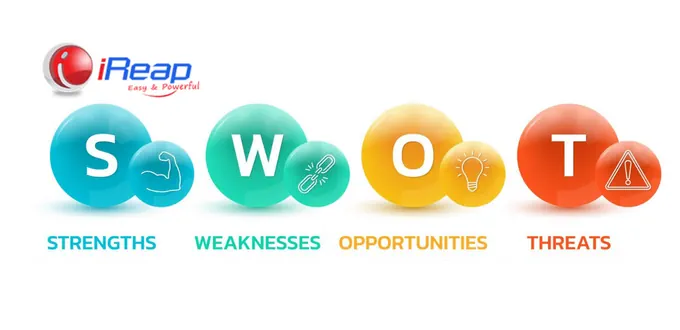
What is meant by business opportunity? A business opportunity is an opportunity that you can take advantage of to make a profit. For example, you discover a franchise business opportunity, start a franchise business and finally profit from the company.
To find out which business opportunities are profitable, you need to know how to analyze business opportunities and the characteristics of potential business opportunities. For that, please read the full explanation in this article until it’s finished.
What is meant by a business opportunity?
A business opportunity is an opportunity that you can take advantage of to make a profit.
This opportunity can be in the form of a business idea that is possible to run, has risks.
But still has the potential to grow, as long as you want to manage your business correctly, including managing business finances properly.
How to Analyze Business Opportunities
Before deciding to run a particular business or business, you need to do an analysis first.
The purpose of analyzing business opportunities here is to determine their potential, whether it is possible to develop them, what risks you might face, how much capital is needed, and so on.
For the business opportunity analysis process to be useful in making the best decisions, you can use a SWOT analysis (Strength, Weakness, Opportunity, and Threat). The method is as follows:

1. Strength
At this stage, you need to find and list the many advantages of a business you want to run. For example, by answering the following questions:
- Is there a Unique Selling Point (USP) of the business you want to run?
- Does the company (or you as a business person) have the ability to run the business?
- What plans and steps will you take to be able to run your business?
- Who are your competitors, and what advantages do you have over your competitors?
2. Weaknesses
Weakness means weakness. You need to analyze and predict what weaknesses you have that can harm your business.
In addition, find out the various factors that can cause the company not to go as expected. Knowing these weaknesses allows you to prepare yourself and look for possibilities to overcome weaknesses before problems occur.
3. Opportunities
Then there is an opportunity or opportunities. So, find out as many opportunities as possible for your business to grow in the future.
Some examples to find out the opportunities of a business, such as:
- Compatibility of business with the needs of today’s society.
- Is there a chance that consumers will like the product from your business? If there is, try to list it first.
- Is the business or product that you will run a business that follows trends, or can it be run on an ongoing basis?
4. Threats
Finally, there is a threat (threat). Learn the challenges and obstacles that may arise when you start running a business or want to grow your business.
Threats here can be in the form of utilizing and using the latest technology, availability of capital, the skills needed to run a business properly, government regulations, and so on.
If you still need references or additional knowledge regarding SWOT analysis, you can learn about it from other articles on the iReap website. Check it out here: SWOT Analysis: Definition, Factors, and Examples.

Characteristics of a Potential Business Opportunity
In addition to analyzing the business opportunities you want to try, it’s a good idea also to recognize the characteristics of potential business opportunities that prevent you from potential losses.
Some of the characteristics of these business opportunities, among others:
1. Low Risk Potential
Find out how significant the potential for business losses is. As much as possible, you have predicted various problems that might occur when you start a business.
If the potential loss is low, there’s nothing wrong with trying to run the business. With a note, you have prepared well. So when a problem occurs, you already know what to do to solve it.
2. Unique Business Ideas and Selling Value
When you decide to run a business, you already know your business idea has uniqueness and selling points.
This means that even though your product is the same as toothpaste, your product has other advantages, such as making teeth whiter and free of tartar.
Another example of your business product is contemporary culinary delights such as dim sum. Out there, there are already many business people who also sell Dimsum.
But the dim sum you sell is more affordable, the variants are varied, fresh, not frozen food, and the packaging is better, for example. This all includes uniqueness and has a high selling value.
3. Business Capital Increases, Not Decreases
When starting a business, try to record the amount of capital that comes out. Then routinely analyze business finances and see if capital continues to come out without income or is already income.
Even better if you already have a business financial plan from the start. You are starting from sources of capital, use of money, compliance with the purchase and sales invoices, and profit/loss calculations.
In this way, you can know whether your business is profitable or too risky to lose big if you continue.
4. Business According to Trends and Community Needs
If you want to build a sustainable business and have greater profit potential, you need to choose a business that fits the trends and needs of society.
Apart from adjusting to trends, it would help if you also innovated by making your products more varied and superior to competitors’ products.
5. Significant and Adaptable Business Development
Potential business opportunities are those that can adapt to industry changes and technological developments. For example, a business you initially run offline can still operate well once you run it online.
Apart from that, a business must also be able to develop correctly from time to time and keep opportunities open to continue to innovate.
If initially, your business product was only in the form of advertising services on social media, for example. Then according to the increasing consumer needs, you also innovate to open digital marketing services.
This is just an example, OK? You need to evaluate and analyze existing business opportunities and make a careful plan before starting to run them.
Well, now you know what a business opportunity means, how to analyze a business opportunity and even the characteristics of a potential business opportunity. Now it’s your turn to explore the business opportunity you want to run. If so, continue reading How to Find Business Opportunities.



